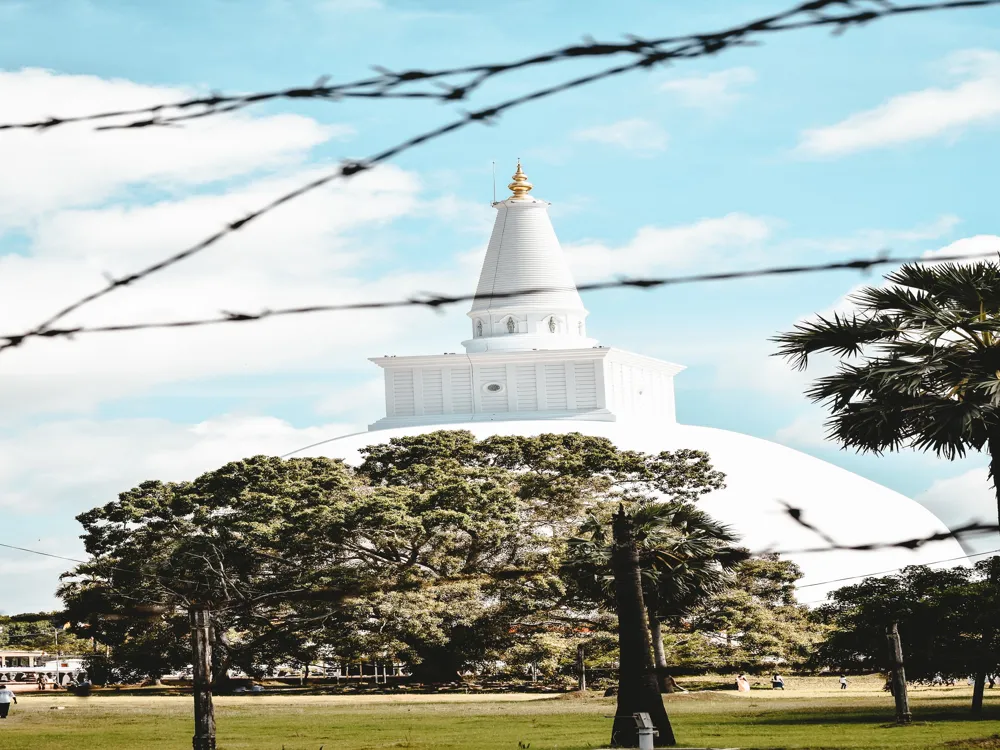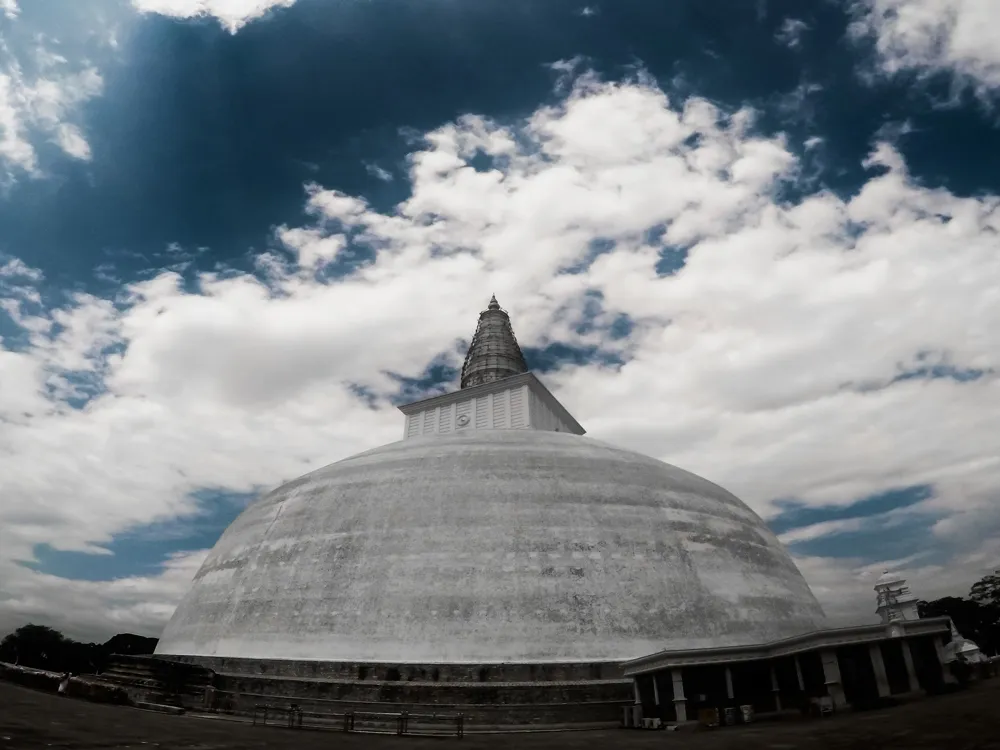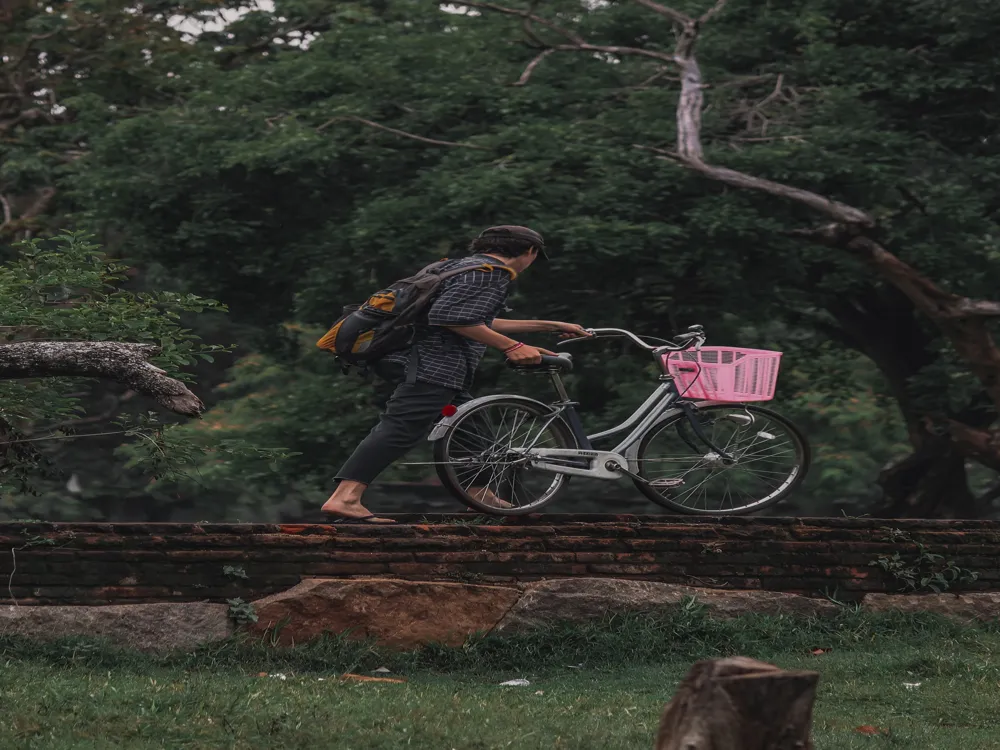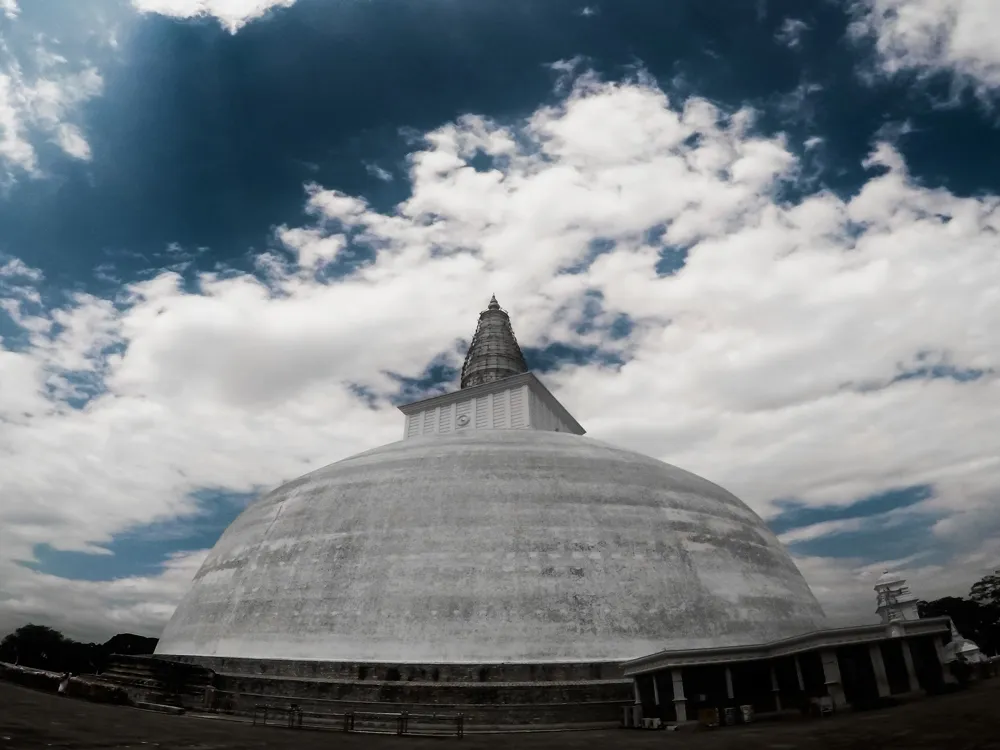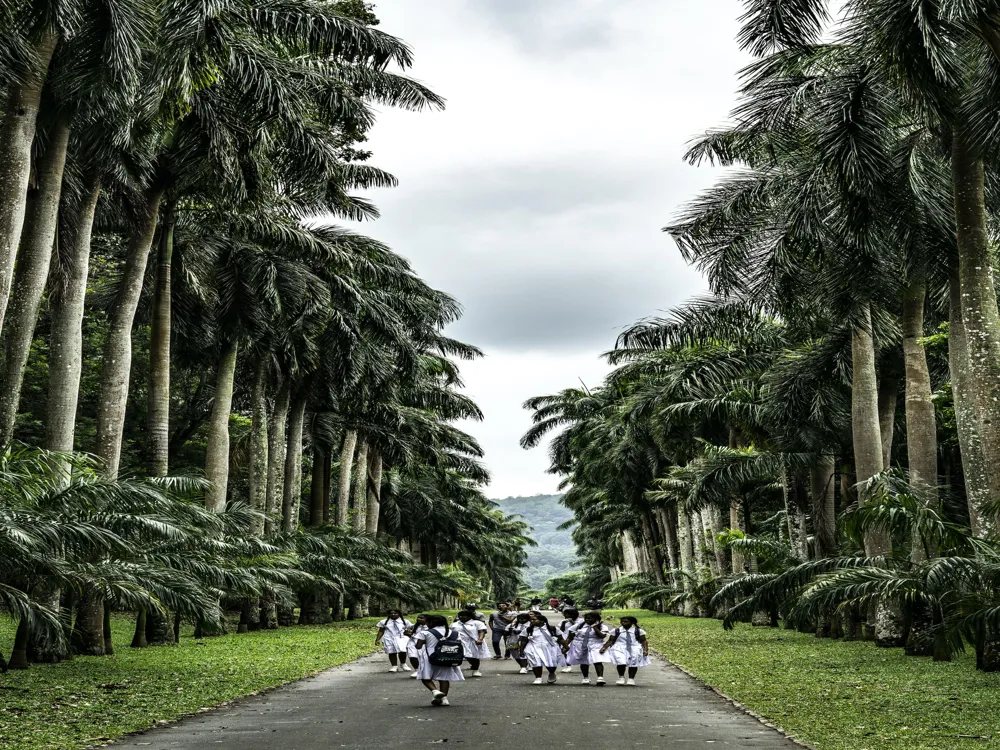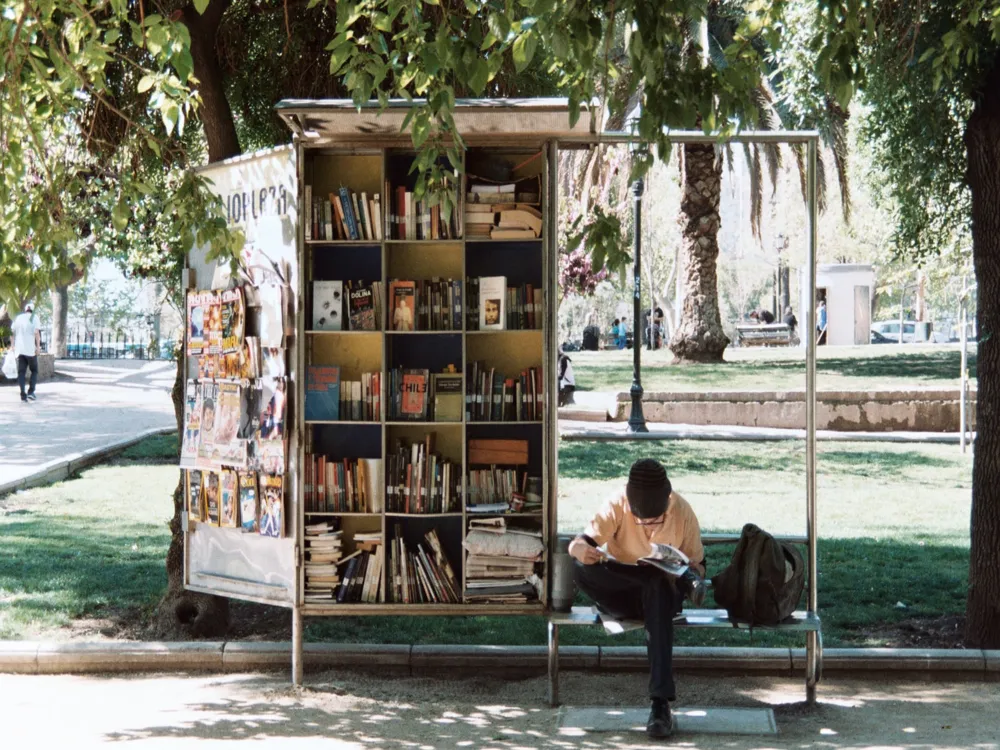Anuradhapura, the ancient city in Sri Lanka, is a treasure trove of archaeological wonders and historical grandeur. This city, which dates back to the 4th century BCE, was the first capital of Sri Lanka and a significant cradle of early Sinhalese civilization. Its ruins, spread over an extensive area, offer a glimpse into a rich, bygone era, showcasing a sophisticated civilization with advanced urban planning, monumental architecture, and a flourishing cultural life. The city, now a UNESCO World Heritage Site, attracts thousands of history buffs, archaeologists, and tourists from around the world each year. The Anuradhapura Kingdom lasted for over a millennium, making it one of the longest-lasting civilizations in history. During its peak, the city was adorned with monastic complexes, palaces, and a network of reservoirs and canals, illustrating a high degree of engineering and architectural prowess. The religious significance of Anuradhapura is profound, as it was a central point for Buddhism in Sri Lanka. The city houses some of the most sacred Buddhist relics and stupas, attracting pilgrims from all corners of the globe. Its rich history encompasses tales of kings, monks, and the common people who lived in the city, leaving behind a legacy that continues to be admired. The architecture of Anuradhapura is a testament to the artistic and engineering skills of the ancient Sinhalese. This grand city was constructed with a meticulous urban design that harmonized with the natural landscape. The ruins reveal a variety of architectural forms, from colossal stupas to intricate sculptures and expansive monastic complexes. The most iconic structures in Anuradhapura are its stupas, also known as 'dagabas'. These dome-shaped relics are significant in Buddhist architecture, symbolizing the Buddha's presence. The Jetavanarama Dagaba, once the third tallest structure in the ancient world, showcases the grandeur of Anuradhapura's architecture. It stands as a monumental testament to the city's technological advancement and spiritual devotion. Another marvel, the Ruwanwelisaya Stupa, is revered for its architectural beauty and historical importance, being one of the oldest and largest stupas in the world. The city's layout reflects advanced urban planning techniques, with a network of reservoirs, canals, and bathing tanks, showcasing a sophisticated hydraulic engineering system. These waterworks provided irrigation for agriculture and also served religious and communal purposes. The Twin Ponds, Kuttam Pokuna, are a fine example of the city's engineering excellence, designed for the use of monks in the nearby Abhayagiri Monastery. Anuradhapura's architectural heritage is not only limited to its grand stupas and water systems. The remains of palaces, such as the Brazen Palace (Lovamahapaya), reveal the luxurious lifestyle of ancient royalty. This palace was said to have a thousand rooms and a copper roof, epitomizing the opulence of the time. The intricately carved moonstones that adorn the entrances of many buildings are another unique feature of Anuradhapura's architecture. These semi-circular slabs of stone are beautifully decorated with carvings of animals, floral patterns, and religious symbols, depicting the path to enlightenment. When visiting the sacred sites in Anuradhapura, it's important to dress modestly. Covering shoulders and legs is a sign of respect at religious sites. Lightweight, breathable clothing is recommended due to the tropical climate. To truly appreciate the history and significance of Anuradhapura, consider hiring a local guide. They provide valuable insights and stories that enrich the experience and bring the ruins to life. The climate can be hot and humid. Carry water, wear sunscreen, and bring a hat or an umbrella for shade. Staying hydrated and protected is essential for a comfortable visit. Anuradhapura is a place of religious significance. Show respect by removing shoes and hats when entering sacred areas, and refrain from taking photographs in restricted areas. Anuradhapura covers a large area, so it's wise to plan your visit. Decide which sites are a must-see and consider transportation options like renting a bicycle or a vehicle to navigate efficiently. Reaching Anuradhapura is convenient from major cities in Sri Lanka. The city is well-connected by road and rail, making it accessible for travelers. From Colombo, one can take a train or a bus to Anuradhapura, which typically takes about 3-4 hours. The journey offers scenic views of the countryside, making it a pleasant experience. For those preferring a more comfortable trip, hiring a taxi or a private vehicle is a viable option. Inside Anuradhapura, transportation varies from tuk-tuks (three-wheeled taxis) to bicycles and hired cars, catering to different preferences and budgets. Read More:Overview of Anuradhapura Ruins
Architecture of Anuradhapura Ruins
Tips When Visiting Anuradhapura Ruins
Dress Appropriately
Hire a Local Guide
Stay Hydrated and Protected from the Sun
Respect the Religious Sites
Plan Your Visit
How To Reach Anuradhapura Ruins
Anuradhapura Ruins
Anuradhapura
₹ 21,999 onwards
View anuradhapura Packages
Weather :
Tags : Historical Site
Timings : 8:30 AM - 5:30 PM
Time Required : December -
Entry Fee : LKR 4500 (Entrance to City)
Planning a Trip? Ask Your Question
Anuradhapura Travel Packages
View All Packages For Anuradhapura
Top Hotel Collections for Anuradhapura

Private Pool

Luxury Hotels

5-Star Hotels

Pet Friendly
Top Hotels Near Anuradhapura
Other Top Ranking Places In Anuradhapura
View All Places To Visit In anuradhapura
Faq on Anuradhapura
What are the Anuradhapura Ruins in Anuradhapura?
The Anuradhapura Ruins are a UNESCO World Heritage Site located in Anuradhapura, Sri Lanka. They comprise ancient archaeological remains dating back to the Anuradhapura Kingdom, one of the oldest civilizations in the world.
What can I see at the Anuradhapura Ruins?
At the Anuradhapura Ruins, you can explore numerous historical sites such as stupas, dagobas, temples, monasteries, palaces, and ancient irrigation systems. Highlights include the Ruwanwelisaya Stupa, Jetavanaramaya, Thuparamaya, Abhayagiri Monastery, and the Jaya Sri Maha Bodhi tree.
How old are the Anuradhapura Ruins?
The Anuradhapura Ruins date back over 2,000 years, with its earliest structures built around the 4th century BCE. The site served as the capital of Sri Lanka for many centuries until the 11th century CE.
What is the significance of the Anuradhapura Ruins?
The Anuradhapura Ruins hold immense cultural, historical, and religious significance. They represent the architectural and engineering prowess of ancient Sri Lankan civilization and are deeply revered as sacred sites by Buddhists due to their association with Lord Buddha.
How do I get to the Anuradhapura Ruins?
Anuradhapura is easily accessible by road from major cities like Colombo and Kandy. Once in Anuradhapura, you can reach the ruins by car, tuk-tuk, or bicycle. Guided tours are also available for a more immersive experience.
View anuradhapura Packages
Weather :
Tags : Historical Site
Timings : 8:30 AM - 5:30 PM
Time Required : December -
Entry Fee : LKR 4500 (Entrance to City)
Planning a Trip? Ask Your Question
Anuradhapura Travel Packages
View All Packages For Anuradhapura
Top Hotel Collections for Anuradhapura

Private Pool

Luxury Hotels

5-Star Hotels

Pet Friendly
Top Hotels Near Anuradhapura
Other Top Ranking Places In Anuradhapura
Faq on Anuradhapura
What are the Anuradhapura Ruins in Anuradhapura?
The Anuradhapura Ruins are a UNESCO World Heritage Site located in Anuradhapura, Sri Lanka. They comprise ancient archaeological remains dating back to the Anuradhapura Kingdom, one of the oldest civilizations in the world.
What can I see at the Anuradhapura Ruins?
At the Anuradhapura Ruins, you can explore numerous historical sites such as stupas, dagobas, temples, monasteries, palaces, and ancient irrigation systems. Highlights include the Ruwanwelisaya Stupa, Jetavanaramaya, Thuparamaya, Abhayagiri Monastery, and the Jaya Sri Maha Bodhi tree.
How old are the Anuradhapura Ruins?
The Anuradhapura Ruins date back over 2,000 years, with its earliest structures built around the 4th century BCE. The site served as the capital of Sri Lanka for many centuries until the 11th century CE.
What is the significance of the Anuradhapura Ruins?
The Anuradhapura Ruins hold immense cultural, historical, and religious significance. They represent the architectural and engineering prowess of ancient Sri Lankan civilization and are deeply revered as sacred sites by Buddhists due to their association with Lord Buddha.
How do I get to the Anuradhapura Ruins?
Anuradhapura is easily accessible by road from major cities like Colombo and Kandy. Once in Anuradhapura, you can reach the ruins by car, tuk-tuk, or bicycle. Guided tours are also available for a more immersive experience.







